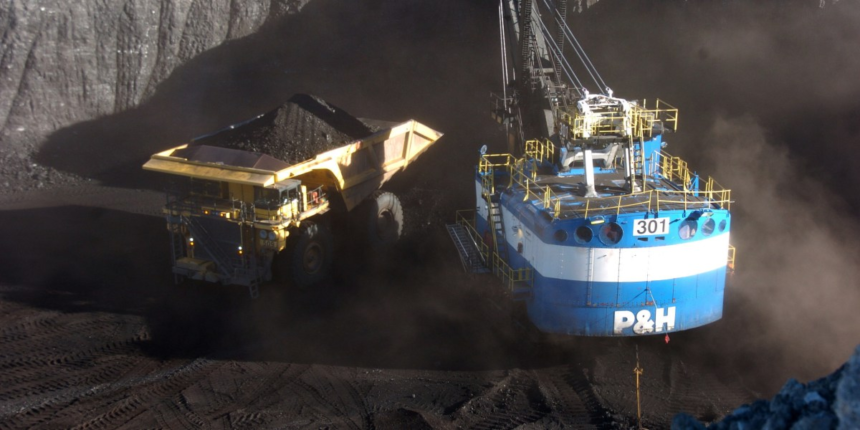Three other mines poised for expansions or new leases under Trump also face declining demand as power plants use less of their coal and in some cases shut down, according to data from the U.S. Energy Information Administration and the nonprofit Global Energy Monitor.
The question looms over the administration’s enthusiastic embrace of coal, a leading contributor to climate change. It also shows the uncertainty inherent in inserting those policies into markets where energy-producing customers make long-term decisions with massive implications, not just for their own viability but for the future of the planet, in an ever-shifting political landscape.
Interior Secretary Doug Burgum said Monday that the administration is opening more than 20,000 square miles (52,000 square kilometers) of federal lands to mining. That is an area bigger than New Hampshire and Vermont combined.
“We’re putting American miners back to work,” Burgum said, flanked by coal miners and Republican politicians. “We’ve got a demand curve coming at us in terms of the demand for electricity that is literally going through the roof.”
The AP’s finding that power plants served by mines on public lands are burning less coal reflects an industrywide decline that began in 2007.
Energy experts and economists were not surprised. They expressed doubt that coal would ever reclaim dominance in the power sector. Interior Department officials did not respond to questions about future demand for coal from public lands.
But it will take time for more electricity from planned natural gas and solar projects to come online. That means Trump’s actions could give a short-term bump to coal, said Umed Paliwal, an expert in electricity markets at Lawrence Berkeley National Laboratory.
“Eventually coal will get pushed out of the market,” Paliwal said. “The economics will just eat the coal generation over time.”
Twenty-one of the plants are scheduled to stop burning coal in the next decade. They include all five plants using coal from NTEC’s Spring Creek mine in Montana.
That is less than one-tenth of a penny per ton, a fraction of what coal brought in its heyday. By comparison, the last large-scale lease sale in the Powder River Basin, also for 167 million tons of coal, drew a bid of $35 million in 2013. Federal officials rejected that as too low.
NTEC said the low value was supported by prior government reviews predicting fewer buyers for coal. The company said taxpayers would benefit in future years from royalties on any coal mined.
“The market for coal will decline significantly over the next two decades. There are fewer coal mines expanding their reserves, there are fewer buyers of thermal coal and there are more regulatory constraints,” the company said.
In central Wyoming on Wednesday, the government will sell 440 million tons of coal next to NTEC’s Antelope Mine. Just over half of the 29 power plants served by the mine are scheduled to stop burning coal by 2035.
Among them is the Rawhide plant in northern Colorado. It is due to quit coal in 2029 but will keep making electricity with natural gas and 30 megawatts of solar panels.
Peabody’s projection was based on the premise that existing power plants can burn more coal. That amount, known as plant capacity, dropped by about half in recent years.
“U.S. coal is clearly in comeback mode,” Peabody’s president, James Grech, said in a recent conference call with analysts. “The U.S. has more energy in its coal reserves than any nation has in any one energy source.”
No large coal power plants have come online in the U.S. since 2013. Most existing plants are 40 years old or older. Money pledged by the administration to refurbish older plants will not go very far given that a single boiler component at a plant can cost $25 million to replace, said Nikhil Kumar with GridLab, an energy consulting group.
That leads back to the question of who will buy the coal.
“I don’t see where you get all this coal consumed at remaining facilities,” Kumar said.









